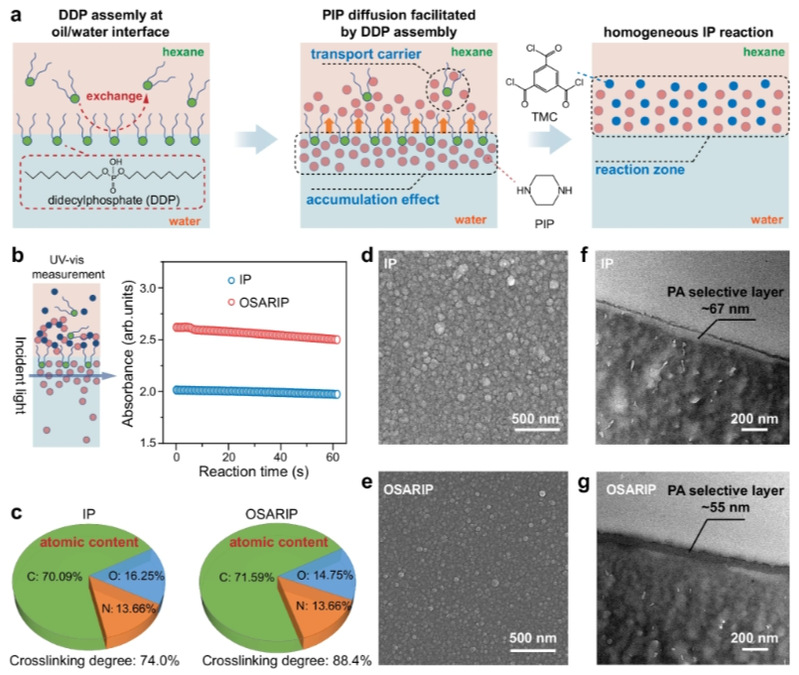Extreme Li-Mg Selectivity via Precise Ion Size Differentiation of Polyamide Membrane
Quan Peng1,2,3,, Ruoyu Wang4,, Zilin Zhao2, Shihong Lin4, Ying Liu1,2 , Dianyu Dong2, Zheng Wang2, Yiman He2, Yuzhang Zhu1,2,*(朱玉长), Jian Jin1,2,*(靳健) and Lei Jiang5
1College of Chemistry, Chemical Engineering and Materials Science, Innovation Center for Chemical Science & Jiangsu Key Laboratory of Advanced Functional Polymer Design and Application, Soochow University, Suzhou, 215123, P. R. China
2i-Lab, Suzhou Institute of Nano-Tech and Nano-Bionics, Chinese Academy of Sciences, Suzhou, 215123, P. R. China
3National Key Laboratory of Science and Technology on Micro/Nano Fabrication, Shanghai Jiao Tong University, CHINA
4Department of Civil and Environmental Engineering, Vanderbilt University, Nashville, TN 37235, USA
5CAS Key Laboratory of Bio-inspired Materials and Interfacial Science, Technical Institute of Physics and Chemistry, Chinese Academy of Sciences, Beijing, 100190, P. R. China.
Nat. Commun. 2024, 15, 2505
Abstract: Achieving high selectivity of Li+ and Mg2+ is of paramount importance for effective lithium extraction from brines, and nanofiltration (NF) membrane plays a critical role in this process. The key to achieving high selectivity lies in the on-demand design of NF membrane pores in accordance with the size difference between Li+ and Mg2+ ions, but this poses a huge challenge for traditional NF membranes and difficult to be realized. In this work, we report the fabrication of polyamide (PA) NF membranes with ultra-high Li+/Mg2+ selectivity by modifying the interfacial polymerization (IP) process between piperazine (PIP) and trimesoyl chloride (TMC) with an oil-soluble surfactant that forms a monolayer at oil/water interface, referred to as OSARIP. The OSARIP benefits to regulate the membrane pores so that all of them are smaller than Mg2+ ions. Under the solely size sieving effect, an exceptional Mg2+ rejection rate of over 99.9% is achieved. This results in an exceptionally high Li+/Mg2+ selectivity, which is one to two orders of magnitude higher than all the currently reported pressure-driven membranes, and even higher than the microporous framework materials, including COFs, MOFs, and POPs. The large enhancement of ion separation performance of NF membranes may innovate the current lithium extraction process and greatly improve the lithium extraction efficiency.

链接://www.nature.com/articles/s41467-024-46887-4